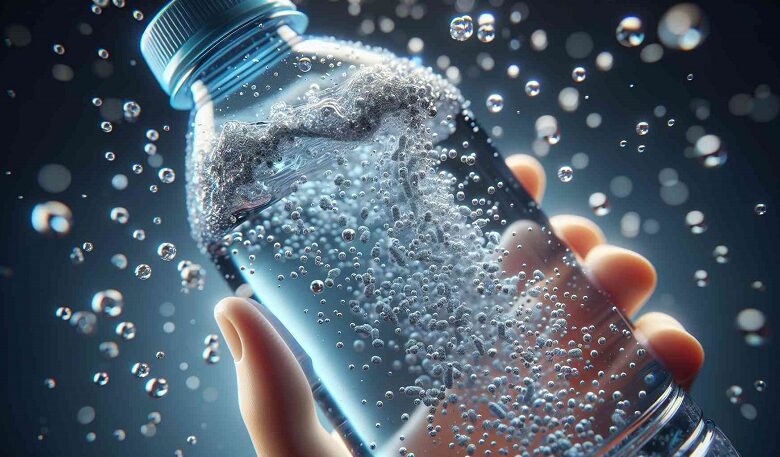
Although environmental microplastics in foods were first reported in 2004, it is only now, after 20 years that their multiple adverse effects on human health are drawing wider attention
Studies in the past have shown the increasing level of tiny plastic particles in our food chain, but their level could not be precisely quantified due to technological limitations. Scientists at Columbia University in the United States, using a trailblazing new technique, have now been able to examine more minutely the miniscule plastic particles present in our food chain.
The study of three well known brands of bottled drinking water sold in plastic containers revealed an average of 240,000 plastic particles per liter — 100 times more than previously estimated. Of the seven types of plastics identified in bottled water, nearly 90 percent were found to be nanoplastics and the rest were microplastics.
Microplastics are polymer fragments that can range from less than 5 millimeters down to 1 micrometer (µm). Nanoparticles are far smaller, ranging from 1µm to 1 nanometer (nm). [For the purpose of clarification: One millimeter (mm) is equal to one thousandth of a meter; one micrometer (µm) is equal to one millionth of a meter; and one nanometer (nm) is equal to one billionth of a meter. One trillionth of a meter is referred to as a picometer (pm).]
At 1,000th the average width of a human hair, nanoplastics are so microscopically small that they can migrate through the tissues of the digestive tract or lungs into the bloodstream, distributing potentially harmful synthetic chemicals throughout the body and into cells. The new study which shows high levels of nanoplastics being ingested through our food and water suggests the problem of plastics in the human body could be far larger than previously estimated.
Previously there were no methodologies to examine and analyze nanoparticles. The latest study used an altered version of Raman Spectroscopy — a laser-based technique that analyzes the chemical composition of cells by measuring vibration of molecules in response to light. The new altered technique, referred to as hyperspectral stimulated Raman scattering (SRS) microscopy, adds a second laser to amplify the previous signal by several orders of magnitude, allowing the previously unseen nanoparticles to be detected in microseconds rather than the hours needed by the older technique.
Using the new method, the researchers could observe particles as small as 100 nanometers in the water they examined. Instead of the 300 nanoparticles per liter previously estimated to be present in bottled water, the new study revealed the presence of between 110,000 and 370,000 nanoparticles per liter.
Following the detection of the nanoparticles, the researchers then used a new machine-based learning technology that allowed them to identify and classify which plastic types were involved. It is worth adding that the instrument was tuned to analyze only seven major types of plastics, so although other nanoparticles were detected in the water samples, these were not analyzed. The innovative new techniques presented in the study open the door for further research to better understand the potential risks of these tiny particles to human health
Although confirmed studies on the risks posed by these particles in the human body are currently not available, what is known is that since these tiny particles do not biodegrade readily they can remain for an undetermined length of time within the body, potentially posing a long-term health hazard. Experts opine and some studies suggest that these tiny plastic particles could cause physical injury by rubbing against tissues such as the intestinal lining when ingested through food and drink, or the lung linings when inhaled through air.
From the intestine and lungs the nanoparticles could infiltrate into the bloodstream and find their way to the liver, kidney and brain, as well as cross the placental boundary to end up in an unborn child. Micro and nanoplastics can also be a chemical hazard, as they contain additives which are added during their production to give them desirable properties such as strength, flexibility, and adaptability to external factors. Some of these additives include phthalates, bisphenol A (BPA), per- and polyfluorinated substances (PFAS), and heavy metals.
Many of these additives are known to alter endocrine system functions leading to adverse developmental, reproductive, neurological, and immune effects. In addition, since the tiny polymers have the ability to bind to all kinds of compounds, they may carry into the body harmful environmental pollutants, toxins, antibiotics, or microorganisms.
Once inside the body, the nanoparticles release these compounds causing various health issues such as inflammation, oxidative stress and immune responses that could contribute to the development of diseases such as cancer, metabolic disorders, and neurodevelopmental conditions, among others.
The new findings, especially the presence of large amounts of nanoparticles in bottled water are certainly a serious cause for concern to the public and to health authorities. There are several steps that we as consumers can take to lower the risk of plastic particles in the body. These include avoiding consumption of foods and beverages in plastic containers, wearing clothing made from natural fabrics, and buying consumer products made from natural materials, among others.













